I love taking care of my underwater world with care and accuracy. I looked for the best tool to measure aquarium salinity. I found that a refractometer for reef tank use is the top choice for this job.
For a marine ecosystem to thrive, getting the salinity right is crucial. I tried many tools, from simple ones to advanced ones. The Misco Aqua-H2O and the Milwaukee digital refractometer proved to be the best.
Devices like the VeeGee analog refractometer make keeping salinity levels easy. But the high-quality Misco Aqua-H2O can measure very precisely. This precision matters a lot for the health of a reef tank.
Bargain tools may look attractive at first. But their poor performance can let you down. Using RO water for calibrating helps get accurate results. This is essential for the well-being of the aquarium and its inhabitants.
Diving into the Importance of Salinity Measurements in Your Aquarium
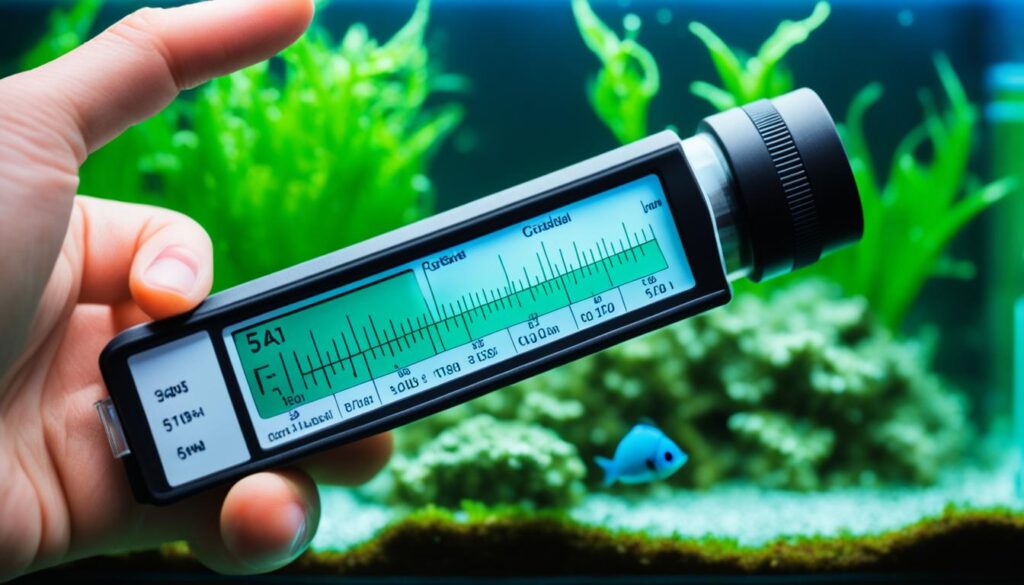
Maintaining a healthy marine ecosystem in your aquarium means more than just feeding fish. It includes precise marine aquarium maintenance, such as controlling salinity levels. The success of your aquarium largely depends on salinity monitoring and accurate specific gravity measurements.
Understanding specific gravity is crucial. It compares your aquarium water’s density to pure water. This affects the health and stress of your tank’s marine life. The ocean’s salinity and specific gravity are stable. Mimicking these conditions in your aquarium helps your marine friends flourish.
Understanding Specific Gravity and Its Impact on Marine Life
The right specific gravity for marine aquariums is usually between 1.023 and 1.025 for reef tanks. For FOWLR (Fish Only with Live Rock) setups, it is 1.020 to 1.025. Keeping this balance is essential. Even small changes can stress your fish and make them sick. Checking and adjusting salinity regularly is a key part of marine aquarium maintenance.
For accuracy, using refractometers is advisable over hydrometers. They provide precise readings. For more on this, you can read about the advantages of using a Hanna Seawater refractometer.
How Regular Salinity Checks Can Benefit Your Aquatic Friends
Regular salinity checks guard against harmful changes that cause osmotic stress. This stress happens when fish and invertebrates must continually adapt to changing water conditions. This adaptation uses energy they could use for growth or fighting off diseases. In my experience, careful salinity monitoring with a reliable refractometer supports a healthy marine ecosystem. It also brings out the best in your marine life, making aquarium keeping more rewarding.
To sum up, for new or existing tanks, systematic salinity checks and specific gravity measurements are crucial. Using top-quality tools like refractometers will greatly improve your aquarium’s success and enjoyment.
A Closer Look at Different Salinity Measuring Devices
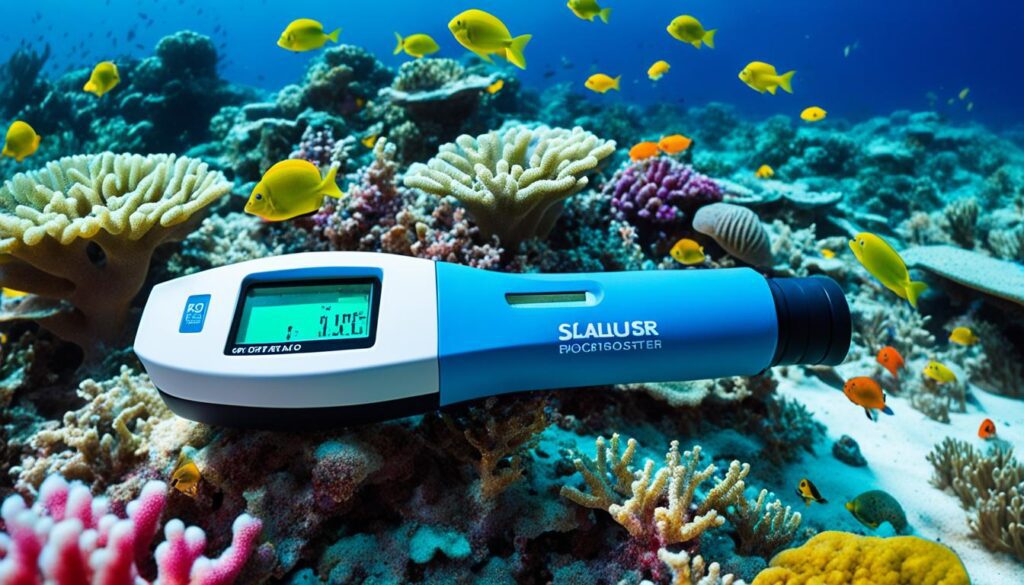
To keep an aquarium clean, knowing how to measure salinity is key. We have many tools, from simple analog meters to advanced digital refractometers. Let’s look at how these devices differ and how they have changed aquarium care.
Analog Versus Digital: Weighing the Options for Accuracy and Convenience
Old-school analog meters like swing arm hydrometers have been popular for a long time. They are cheaper but harder to read correctly and can give wrong results if bubbles get in. On the other hand, digital refractometers are more accurate and faster to use. They also adjust for temperature changes, making the Milwaukee Seawater Digital Refractometer a favorite for those who need reliable readings.
From Hydrometers to Refractometers: Evolution of Salinity Tools
The move from simple hydrometers to high-tech digital refractometers is a big deal in aquarium tool history. Hydrometers look at how an object floats to measure gravity, while refractometers measure how light bends through water to directly read salinity. This change has made it much easier and more reliable to keep track of water conditions, which is crucial for the well-being of marine life.
Understanding the exact salt levels in an aquarium is important. Let’s look at some common analog salinity meters and digital refractometers. We’ll see how they work and why they are helpful for maintaining an aquarium:
Device Type |
Model |
Key Feature |
Accuracy |
Calibration Need |
|---|---|---|---|---|
Analog Hydrometer |
Swing Arm |
Simple Operation |
±0.002 |
Manual, frequent |
Digital Refractometer |
Milwaukee Seawater |
Automatic Temperature Compensation |
±0.0001 |
Periodic, with calibration solution |
Digital Refractometer |
Hanna Salinity Tester |
Waterproof and Portable |
±0.0001 |
Regular, with RO/DI water |
These tools all have their own benefits, based on what an aquarist needs. While analog tools are good for quick checks, digital refractometers offer detailed and accurate data. This shows a major shift in how we use technology to look after aquariums.
Is Refractometer Good? Analyzing Its Precision and Accuracy for Reef Tanks
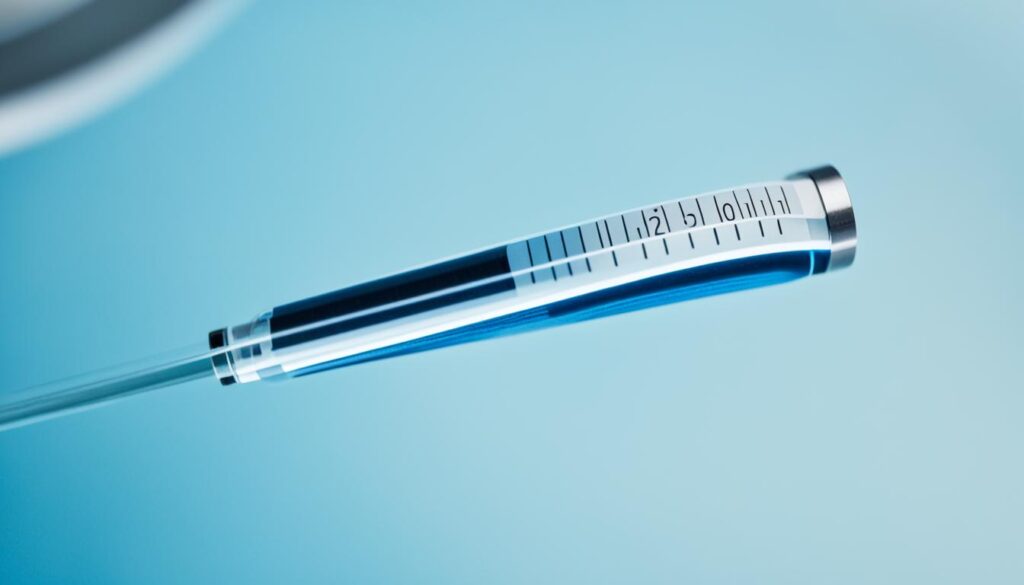
I have been into aquariums for over twenty years. I have seen how tools for maintaining marine ecosystems have changed. The accuracy and precision of refractometers are crucial for reef tanks. This made me switch from simple hydrometers to advanced refractometers.
I first tried two different hydrometers, one big and one small. Their readings often differed by 0.004. This was a big problem for maintaining a stable environment.
Then, I found the Sybon FG100a. It is known for being very reliable and accurate. I calibrated it with a special solution that matched natural seawater. This ensured my aquarium was as close to the natural sea as possible. Compared to other models, including some made of plastic, the Sybon FG100a was the best.
Keeping your reef tank in top shape is important. When it comes to salinity, a good refractometer is key. It should read between 1.024 to 1.026 for reef tanks. This is much better than using hydrometers. Hydrometers can get minerals stuck on them over time. This makes them less accurate and short-lived.
Looking after your refractometer is also important. Keep it away from moisture to avoid rust. Always recalibrate it before use. This makes them last longer and saves money over time.
Moving to advanced tools like the Sybon FG100a was a big step in caring for reef tanks. It also includes using devices like the Milwaukee Seawater Digital Refractometer. This has a clear screen and adjusts for temperature. Investing in these tools helps in keeping your maintenance reliable. It also ensures the well-being of the marine life in your care.
As marine aquariums evolve, using accurate and precise tools is becoming more important. They are essential for anyone serious about reef keeping today.
Making the Case: Is a High-Tech Refractometer a Game-Changer for Your Tank?
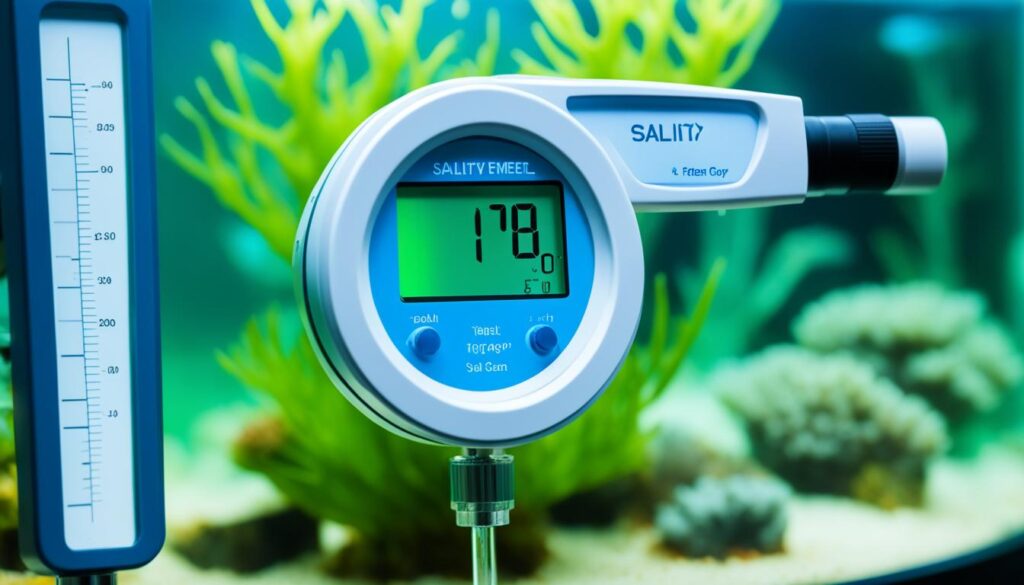
When you get really into reef-keeping, you quickly see how crucial precision is. Upgrading to a high-tech refractometer might look expensive at first. But the benefits for your long-term aquarium health are huge. This tool gives you spot-on salinity readings, keeping your marine life safe and happy.
Technology has made tools like the Vaisala Polaris™ Sanitary Refractometer super precise. This nifty device can do a lot, especially in keeping salinity just right in sensitive marine setups.
Unveiling the Proven Benefits of a Refractometer Over Traditional Methods
Old-school hydrometers are cheaper but can’t match the accuracy you need. A high-tech refractometer gets rid of the guesswork and is super easy to read. For a healthy reef tank, this exactness is key.
Assessing the Long-Term Value of Investing in a Reliable Refractometer
The cost of a refractometer like the Hanna HI98319 Salinity Pen might make you think twice at first. But its long life and precise readings pay off quickly. Adding in temperature checks makes your salinity readings even more trustworthy.
Feature |
Vaisala Polaris™ Sanitary Refractometer |
Traditional Hydrometer |
|---|---|---|
Measurement Range |
0-100 Brix |
Limited |
Hygiene Level |
Certified by 3-A Sanitary and EHEDG |
Basic |
Temperature Compensation |
Stable across wide ranges |
N/A |
Calibration Requirements |
Pre-calibrated; no frequent need |
Frequent recalibration needed |
If you’re serious about reef-keeping and care about your water world, getting a top-notch refractometer is a smart move. It helps you keep the water just right, which your marine life will thank you for.
Practical Insights: Hands-On Experience with Various Refractometer Models
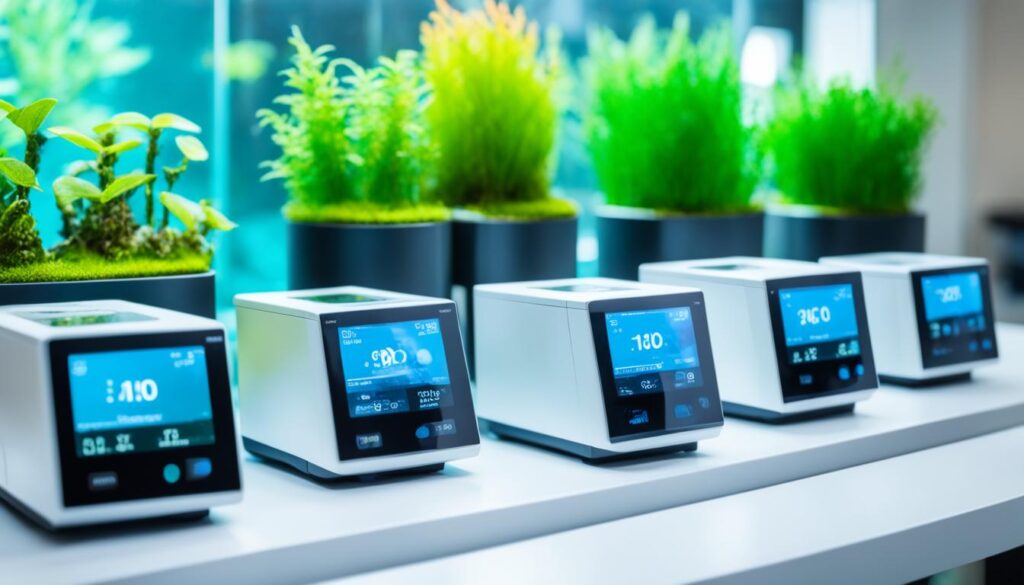
I love keeping an aquarium and have tried different refractometers to check the water. Using various brands and models, I noticed big differences in how they work. I’ll share what I found to help you pick the right one.
The Misco Aqua-H2O was my first test. It’s known for giving very precise salt levels. This is super important for keeping your reef tank healthy. On the other side, I liked the VeeGee STX-3 because it’s tough and stays accurate for a long time. But, the Milwaukee MA887 was not as precise, even though it’s easy to use.
Affordability is important when choosing a refractometer. The Hanna HI98319 Salinity Pen is a good choice because it’s quick, efficient, and not too expensive. If you don’t want to spend much, there are cheaper brands. Just make sure you calibrate them well to get accurate readings.
If you want to compare different models, here’s a table with my findings:
Model |
Accuracy |
Durability |
User-Friendly |
Price Category |
|---|---|---|---|---|
Misco Aqua-H2O |
High |
Medium |
Yes |
High |
VeeGee STX-3 |
Medium |
High |
No |
Medium |
Milwaukee MA887 |
Low |
Medium |
Yes |
Medium |
Hanna HI98319 |
High |
High |
Yes |
Medium |
Generic White-Label |
Variable |
Low |
Varies |
Low |
Testing these refractometers myself, I found each has its own pros and cons. This guide should help you find one that fits your aquarium’s needs.
Breaking Down the Costs: Price Versus Performance in Refractometers
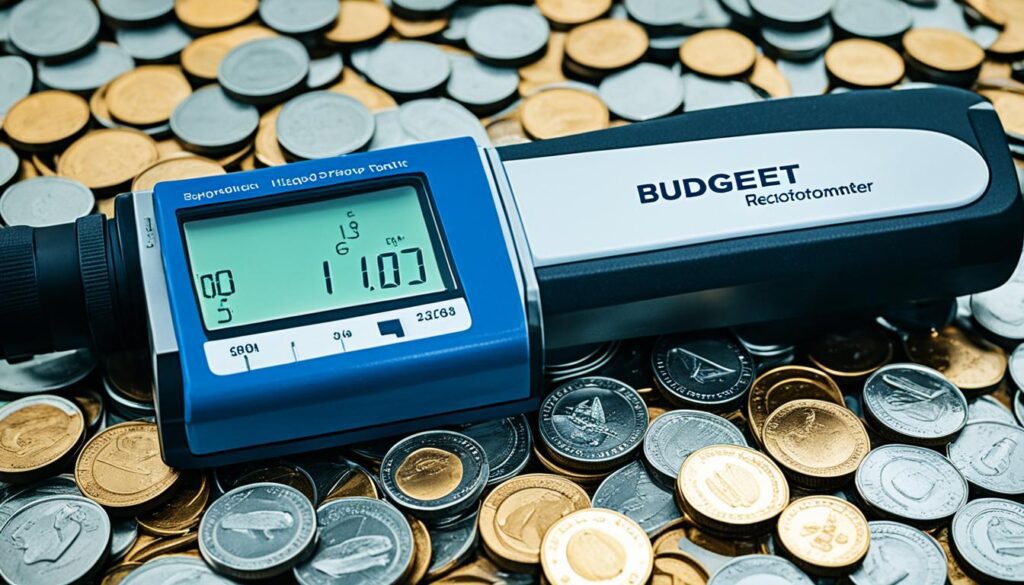
If you love the marine world, weighing the cost against the quality of salinity tools matter. It’s crucial for both hobbyists and serious aquarists to understand how equipment cost impacts performance. This understanding often drives my choices when buying gear like refractometers.
A Cost-Effective Tool: Exploring Budget-Friendly Refractometer Options
For beginners, a budget refractometer is a great start. Brands like VeeGee and Hanna offer good quality at an affordable price. The VeeGee STX-3, for example, is easy to use and performs well, making it a smart choice for those on a tight budget.
In the debate of performance versus price, the Hanna Salinity Pen is noteworthy. It’s fast at measuring but may not be as precise as pricier options. Yet, its convenience and speed are perfect for regular checks.
Deciphering the True Cost of Salinity Equipment for Marine Enthusiasts
Exploring the economics of a marine setup involves looking at the long-term use of salinity devices. A cheaper refractometer might have lower upfront costs. However, models like the Misco Aqua-H2O offer better accuracy and durability. This can mean saving money over time and getting more reliable readings, important for marine life health.
To show these differences, here’s a table comparing key features of popular refractometers:
Model |
Cost |
Accuracy |
User-Friendliness |
Longevity |
|---|---|---|---|---|
VeeGee STX-3 |
Low |
Medium |
High |
Medium |
Hanna Salinity Pen |
Low |
Low to Medium |
Very High |
Low |
Misco Aqua-H2O |
High |
High |
Medium |
High |
In conclusion, choosing the suitable salinity tool for your aquarium and budget is key. Knowing the balance between cost and performance helps aquarists make smart choices. These choices can keep your aquatic world healthy and your hobby sustainable over time.
Finding the Right Balance: When to Splurge or Save on Salinity Tools
As an aquarium lover, I’ve faced the challenge of choosing the right salinity tools. It’s key to keep your reef tank healthy, aiming for natural seawater levels of 35 parts per thousand (ppt). So, when should you invest in a high-quality refractometer?
For new hobbyists or those with small setups, starting with an entry-level refractometer is wise. These tools offer enough accuracy and won’t break the bank. They’re easy to use and suitable for getting started.
But, if your love for marine life grows, you’ll need better tools. A salinity probe and probe cost about $205, the same as a good refractometer, like the Misco Aqua-H2O. Investing in accurate tools means ensuring your marine friends’ happiness over time. Good maintenance is crucial, at least once a year.
For experts, a top-notch refractometer is key. It helps prevent salinity shifts in delicate or large reefs. It’s essential for maintaining proper salinity, alkalinity, and calcium levels. Advanced setups use salinity probes with safety features, like alarms. Making RODI water and choosing the right supplements are also important for reef care. In the end, choose tools that match the needs of your tank to keep your aquatic life flourishing.








